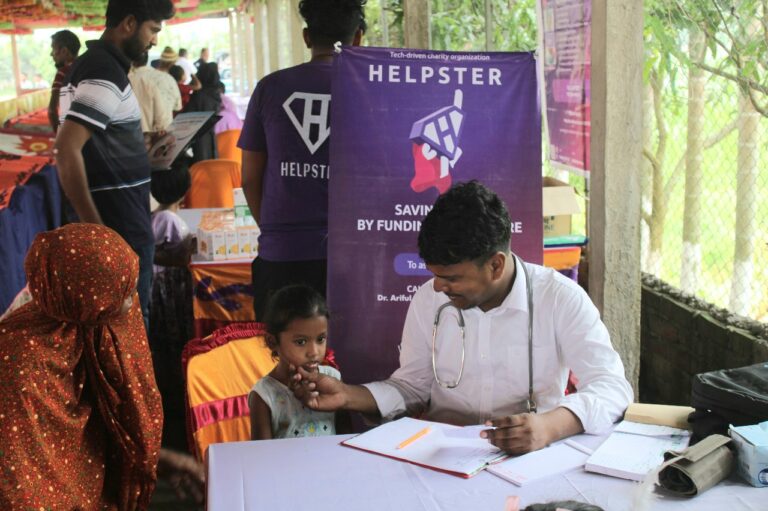
Charity, at its heart, is about trust. Donors give with the hope that their generosity reaches those who truly need it. But in a world where even the most vulnerable sectors are not immune to deception, charity organisations, especially those funding medical services, must remain one step ahead of potential fraudsters. For tech-driven charities like Helpster Charity, ensuring every donation translates into genuine impact is a non-negotiable principle.
The hidden risk: Fraud from 'beneficiaries'
When people think about fraud in the charity sector, they often imagine shady intermediaries or mismanaged funds. But increasingly, there is another, more complex challenge- fraud by supposed beneficiaries. In the realm of healthcare charities, this might include individuals falsifying medical documents, exaggerating health conditions or fabricating financial hardship to gain access to donated funds meant for life-saving treatment.
For organisations funding medical services in developing regions, especially across Africa and Asia, the risks are real. With limited documentation, under-resourced hospitals and widespread poverty, it becomes difficult to verify each case without rigorous systems. Yet failure to do so can lead to precious donor funds being misdirected away from the vulnerable populations they are intended to support.
So how can charities remain compassionate without becoming vulnerable?
Building smarter systems to combat fraud
The solution lies at the intersection of empathy and technology. By integrating robust verification systems, real-time tracking tools and transparency protocols, charities can protect the integrity of their mission while maintaining trust with donors.
First, the vetting process must be airtight. This means validating not just medical needs but also socioeconomic status, treatment urgency and cost-effectiveness. Digital platforms can streamline this process through automated document checks, data triangulation from multiple sources and manual review for high-risk cases.
Secondly, money must never go directly to individuals. Direct hospital disbursement, tracked in real-time, ensures funds are used precisely for the approved treatment and nothing else. This model significantly limits the opportunity for misuse.
And finally, there must be transparency. Donors should not have to guess where their money went. They should be able to track the journey of their donation, from approval to treatment, and see the difference it made.
One tech charity leading the way on all these fronts is Helpster Charity.
Helpsters fraud-proof approach: Technology meets trust
Helpster, a global tech charity startup, is proving that innovation can power integrity. Focused on providing access to healthcare for vulnerable children, young adults and pregnant women across Africa and Asia, Helpster has built a model that is as efficient as it is transparent.
At the core of Helpster’s operations is a robust and tech-powered admission process. Cases are received from a carefully curated network that includes trusted local volunteers, community health workers, NGOs, hospitals and even through Helpster’s own free medical outreaches to underprivileged communities. Each case is then subjected to a thorough validation process that looks at three key factors: poverty level, urgency of treatment and the proposed treatment plan. On-ground assessments are done as Helpster’s team visits the beneficiaries to confirm data supplied. All medical documents are thoroughly reviewed by in-house healthcare professionals for authenticity.
As more charity organisations confront the reality of fraud, the future lies not in becoming cynical but in becoming smarter
This verification is not a long-winded affair. Thanks to the digital platform, most cases are checked, verified and approved (or declined) within a few days. Only cases that meet strict criteria and fall below an assessment value of 1,500 USD are uploaded onto Helpster’s app and website for public support. In exceptional cases, the limit may extend to 3,000 USD but the principle remains: these must be truly life-changing interventions.
Tech-enabled transparency
Helpster’s innovation goes beyond verification. The platform has created a donor-facing ecosystem where every single donation can be tracked in real time. Once a case is approved, the funds raised go directly to local hospitals, not individuals, ensuring the money is used exactly as intended. For every case, donors can access financial documents and treatment updates directly through the Helpster app anytime.
This level of transparency is rare in the charity world and it is what sets Helpster Charity apart. Even operationally, Helpster is lean. Only around 5 to 7 percent of each donation covers transaction charges, bank fees and currency exchange losses. The rest goes directly to the hospital for medical care.
Perhaps the most impressive aspect is Helpster’s admission rate. Today, only around 60 percent of submitted cases are approved. The remaining 40 percent are declined because they either fail to meet the poverty threshold, involve non-critical medical needs or present inconsistencies in documentation. This meticulous filtering reflects the seriousness with which Helpster Charity treats fraud prevention.
And the impact is remarkably high. The average cost for a life-saving treatment through Helpster is just around 230 USD. This efficiency means even small donations can make an outsized difference in a child’s life.
Tech for good, done right
Helpster is a shining example of what happens when technology, compassion and accountability come together. In a sector too often clouded by scepticism, Helpster offers donors something invaluable- confidence. Confidence that their money is reaching those who truly need it. Confidence that the stories on the app and website are real. Confidence that they are, quite literally, saving lives.
As more charity organisations confront the reality of fraud, the future lies not in becoming cynical but in becoming smarter. With the right systems in place, technology can be the strongest ally in ensuring that charity remains exactly what it should be: a force for genuine, positive, measurable change.
And with pioneers like Helpster Charity leading this charge, it is clear that tech for good is not just a slogan but a new standard. To support Helpster’s mission of saving lives, visit www.helpstercharity.org.
Stanley Olisa is the PR Manager for Helpster Charity, a global tech-driven nonprofit easing healthcare access for vulnerable populations across Africa and Asia.



